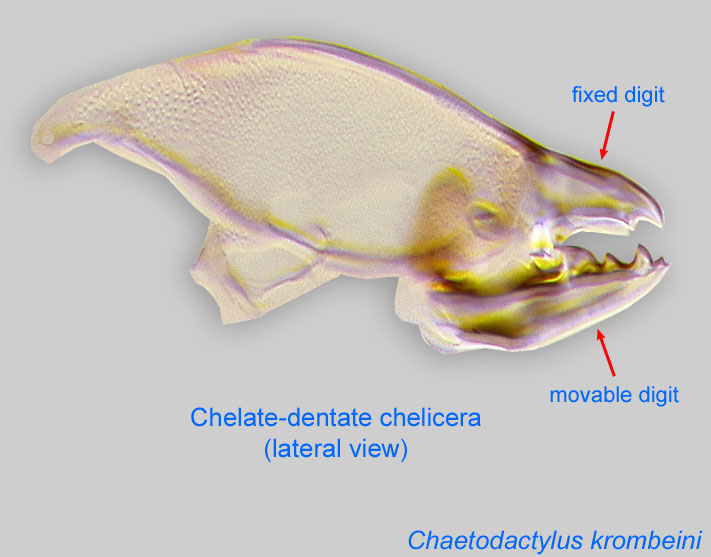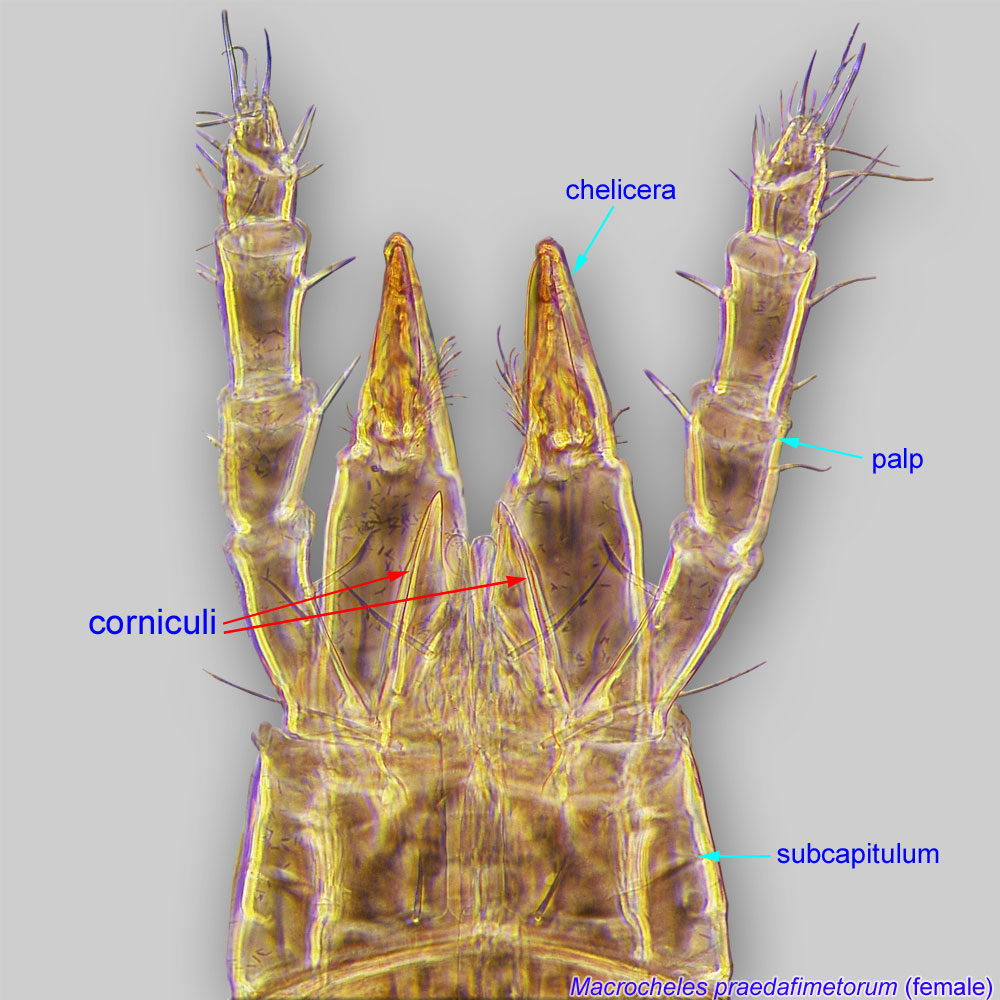neutral to beneficial; predators of small arthropods in bee nests
Stratiolaelaps Berlese, 1916
Superorder Parasitiformes » Order Mesostigmata » Suborder Monogynaspida » Hyporder Dermanyssiae » Family Laelapidae » Genus Stratiolaelaps
Laelaps (Iphis) miles Berlese, 1892
treated as part of Hypoaspis or Cosmolaelaps in older literature
Female: CheliceraeChelicera:
Anterior, paired appendage of the body. Primary organ for food acquisition, adapted for chewing, piercing, tearing, sucking, or filtering.
 enlarged (Figs, 1, 2, 9). CorniculiCorniculus:
enlarged (Figs, 1, 2, 9). CorniculiCorniculus:
Paired, horn-like process (sometimes toothed, bifurcate, trifurcate, spine-like, spatulate, or membranous) on the subcapitulum of parasitiform mites. These processes usually support the salivary styli. If toothed could be confused with a rutellum, a possibly homologous structure in Acariformes and Opilioacarida.
 extending to level of anterior edge of palpfemur (Figs. 2, 9).
extending to level of anterior edge of palpfemur (Figs. 2, 9).
A dichotomous key is available in Walter and Campbell, 2003Walter and Campbell, 2003:
Walter, D. E. amp; N. J. H. Campbell. 2003. Exotic vs endemic biocontrol agents: Would the real Stratiolaelaps miles (Berlese) (Acari: Mesostigmata: Laelapidae), please stand up? Biological Control. 26: 253-269.
With the presence of widened dorsal setae, this genus is similar to Cosmolaelaps. It can be distinguished from this genus and all other genera of Laelapidae by its enlarged cheliceraechelicera:
Anterior, paired appendage of the body. Primary organ for food acquisition, adapted for chewing, piercing, tearing, sucking, or filtering.
 (Figs. 1, 2, 9) and corniculicorniculus:
(Figs. 1, 2, 9) and corniculicorniculus:
Paired, horn-like process (sometimes toothed, bifurcate, trifurcate, spine-like, spatulate, or membranous) on the subcapitulum of parasitiform mites. These processes usually support the salivary styli. If toothed could be confused with a rutellum, a possibly homologous structure in Acariformes and Opilioacarida.
 extending to the level of the anterior edge of palpfemur (Figs. 2, 9).
extending to the level of the anterior edge of palpfemur (Figs. 2, 9).
The genus is cosmopolitan. Stratiolaelaps miles (Berlese, 1892), found in beehives, is Holarctic.
may be found in nests of honey bees (Apis)
facultativefacultative:
can complete entire life cycle without bees or their close relative, wasps
Stratiolaelaps mites are aggressive predators of small invertebrates. They live in soil, stored products, rodent nests, and burrows. One record is from beehives. Prey includes larvae and eggs of springtails, nematodes, mites, and small insects. Several species of Stratiolaelaps are used for biological control of fungus gnats and thrips.